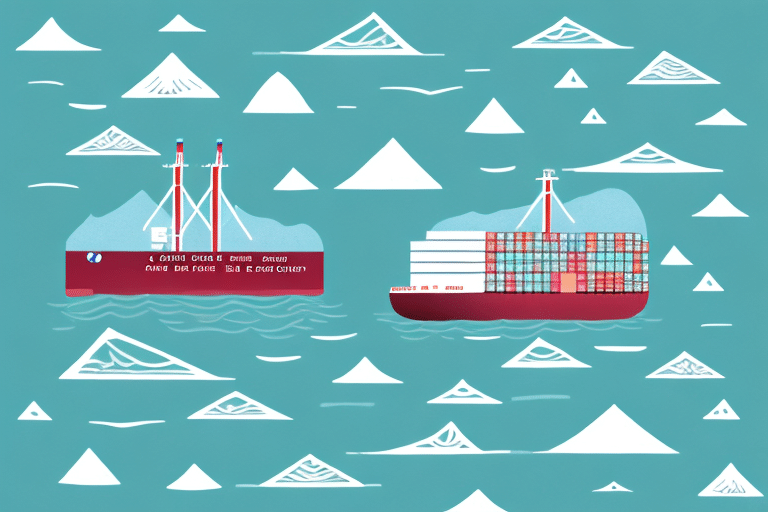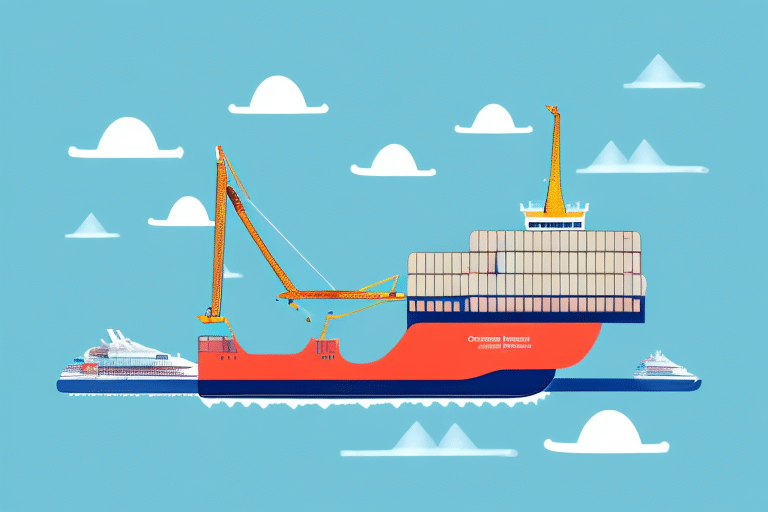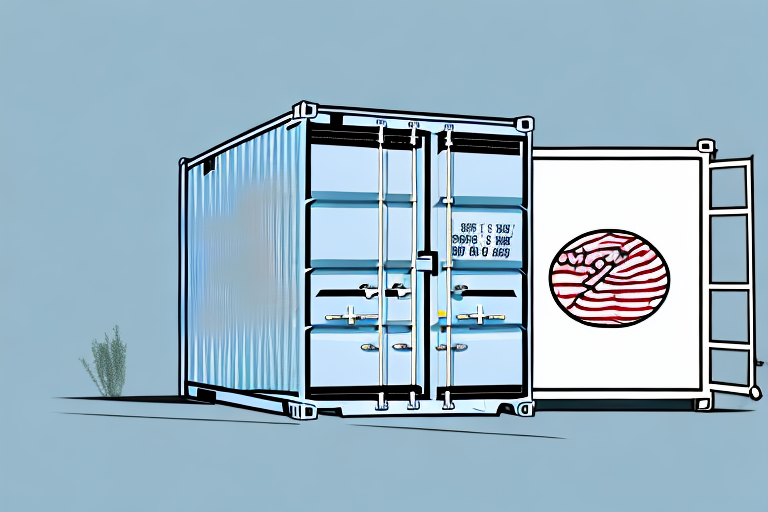Introduction to Shipping Terminology
The shipping industry is a cornerstone of global trade, facilitating the movement of goods across continents and oceans. Whether you're a newcomer or a seasoned professional in the industry, understanding the specialized terminology is crucial for effective communication and operational success. This comprehensive guide demystifies common shipping terms and provides insights into their practical applications.
Key Shipping Terms and Definitions
Fundamental Terms
- FOB (Free on Board): Specifies the point at which the seller's responsibility ends and the buyer's begins, typically when goods are loaded onto a vessel.
- CIF (Cost, Insurance, and Freight): A pricing term that includes the cost of goods, insurance, and freight charges to the destination port.
- Bill of Lading (B/L): A legal document detailing the shipment of goods, serving as a receipt and a title of ownership.
- Incoterms: Standardized trade terms published by the International Chamber of Commerce (ICC) that define the responsibilities of buyers and sellers in international transactions.
Shipping Acronyms
- ETA (Estimated Time of Arrival): The projected time when a shipment is expected to reach its destination.
- ETD (Estimated Time of Departure): The projected time when a shipment is expected to depart from its origin.
- ULD (Unit Load Device): Containers or pallets used to transport cargo on aircraft efficiently.
Modes of Shipping and Their Terminology
Ocean Freight
Ocean freight is the most prevalent mode of shipping for international trade, offering cost-effective solutions for large volumes of goods.
- FCL (Full Container Load): Refers to a shipment that occupies an entire container, typically used by a single shipper.
- LCL (Less Than Container Load): Involves consolidating shipments from multiple shippers into one container.
- TEU (Twenty-foot Equivalent Unit): A standard measure for containerized cargo based on the volume of a 20-foot container.
According to the International Chamber of Shipping, ocean freight accounts for approximately 90% of global trade, underscoring its significance in the shipping industry.
Air Freight
Air freight offers rapid transportation for high-value or time-sensitive goods, albeit at a higher cost compared to ocean freight.
- AWB (Air Waybill): A document that acts as a contract between the shipper and the carrier for the transportation of goods by air.
- CBM (Cubic Meter): A unit of measurement for the volume of goods, calculated as length × width × height in meters.
- DIM Weight (Dimensional Weight): A pricing technique that uses the volume of a package to determine shipping costs.
Data from the International Air Transport Association (IATA) highlights that air freight represents approximately 35% of global trade by value, despite involving only 1% of the total volume.
Rail Freight
Rail freight is ideal for transporting bulk goods overland, offering a balance between cost and speed.
- Intermodal: The use of multiple transportation modes (e.g., rail and truck) without handling the freight itself when changing modes.
- TOFC (Trailer On Flat Car): A method of transporting trailers on rail flatcars.
- COFC (Container On Flat Car): Involves loading containers onto flatcars for rail transport.
The American Association of Railroads reports that rail freight is a reliable option for heavy and bulk commodities, including coal, chemicals, and agricultural products.
Road Freight
Road freight is the most flexible mode of transportation, essential for last-mile delivery and regional distribution.
- LTL (Less Than Truckload): Shipments that do not require a full truck, allowing multiple shipments to share space.
- FTL (Full Truckload): Shipments that occupy an entire truck, typically used by a single shipper for large volumes.
- HazMat (Hazardous Materials): Goods that require special handling and transportation due to their dangerous nature.
According to the Federal Highway Administration, road freight accounts for about 70% of all freight tonnage in the United States, highlighting its critical role in the supply chain.
International Trade and Customs Terminology
International Trade Terms
- HS Code (Harmonized System Code): A standardized numerical method of classifying traded products, used by customs authorities for assessing duties and taxes.
- Customs Broker: A professional who assists importers and exporters in clearing goods through customs by handling documentation and ensuring compliance with regulations.
- Duty: Taxes imposed by governments on imported or exported goods, based on their classification and value.
Incoterms Explained
Incoterms define the responsibilities of buyers and sellers in international transactions, including aspects like shipping, insurance, and tariffs. The latest edition, Incoterms 2020, introduced changes to clarify responsibilities and reduce ambiguities in international trade contracts.
- EXW (Ex Works): The seller makes the goods available at their premises, and the buyer bears all costs and risks from that point.
- DAP (Delivered at Place): The seller is responsible for delivering the goods to a specified location, excluding import clearance.
- DDP (Delivered Duty Paid): The seller handles all costs and risks, including duties and taxes, to deliver the goods to the buyer's location.
For more detailed information, refer to the official Incoterms 2020 documentation by the ICC.
Handling and Logistics Terminology
Packaging and Labeling
- Marking: The labeling of packages with essential information such as weight, dimensions, and handling instructions.
- Stowage: The strategic placement of goods within containers or transportation vehicles to optimize space and prevent damage.
- Palletizing: The process of arranging goods on pallets to facilitate efficient handling and transportation.
Supply Chain Management Terms
- Lead Time: The total time taken from the initiation of a process until its completion, such as production to delivery.
- SKU (Stock Keeping Unit): A unique identifier for each distinct product and service that can be purchased.
- EDI (Electronic Data Interchange): The electronic communication of business information in a standardized format between organizations.
Effective supply chain management is essential for minimizing costs and ensuring timely delivery. According to the Supply Chain Management Review, companies with optimized supply chains are 5% more productive and 6% more profitable than their competitors.
Port Operations and Customs Clearance
Port Operations
- Port of Entry: The port where goods enter a country, undergoing customs clearance and inspections.
- Port of Exit: The port from which goods leave a country, marking the end of export procedures.
- Container Yard: An area within a port designated for storing and managing shipping containers before they are loaded or after they are unloaded.
Customs Clearance
- HS Code: (Repeated from above for emphasis on its role in customs clearance)
- Customs Broker: (Repeated for its critical role in facilitating customs processes)
- Duty: (Repeated for its financial implications in international trade)
Efficient customs clearance is vital for reducing delays and avoiding additional costs. The World Trade Organization emphasizes the importance of streamlined customs procedures in enhancing global trade efficiency.
Handling Dangerous Goods
Transporting dangerous goods involves strict regulations to ensure safety and compliance with international standards.
- UN Number: A four-digit code that identifies specific hazardous substances and articles, ensuring proper handling and transportation.
- ADR (Accord européen relatif au transport international des marchandises Dangereuses par Route): A European agreement regulating the transport of dangerous goods by road.
- IMDG Code (International Maritime Dangerous Goods Code): International regulations governing the safe transportation of dangerous goods by sea.
Adhering to these regulations is crucial for preventing accidents and ensuring the safe passage of hazardous materials. The International Maritime Organization (IMO) provides comprehensive guidelines and updates on best practices for handling dangerous goods.
Conclusion
Mastering shipping terminology is essential for navigating the complexities of the global shipping industry. This glossary serves as a foundational resource, equipping you with the knowledge needed to communicate effectively, make informed decisions, and optimize your shipping operations. Continual learning and staying updated with industry changes will further enhance your proficiency and contribute to your success in the shipping sector.








